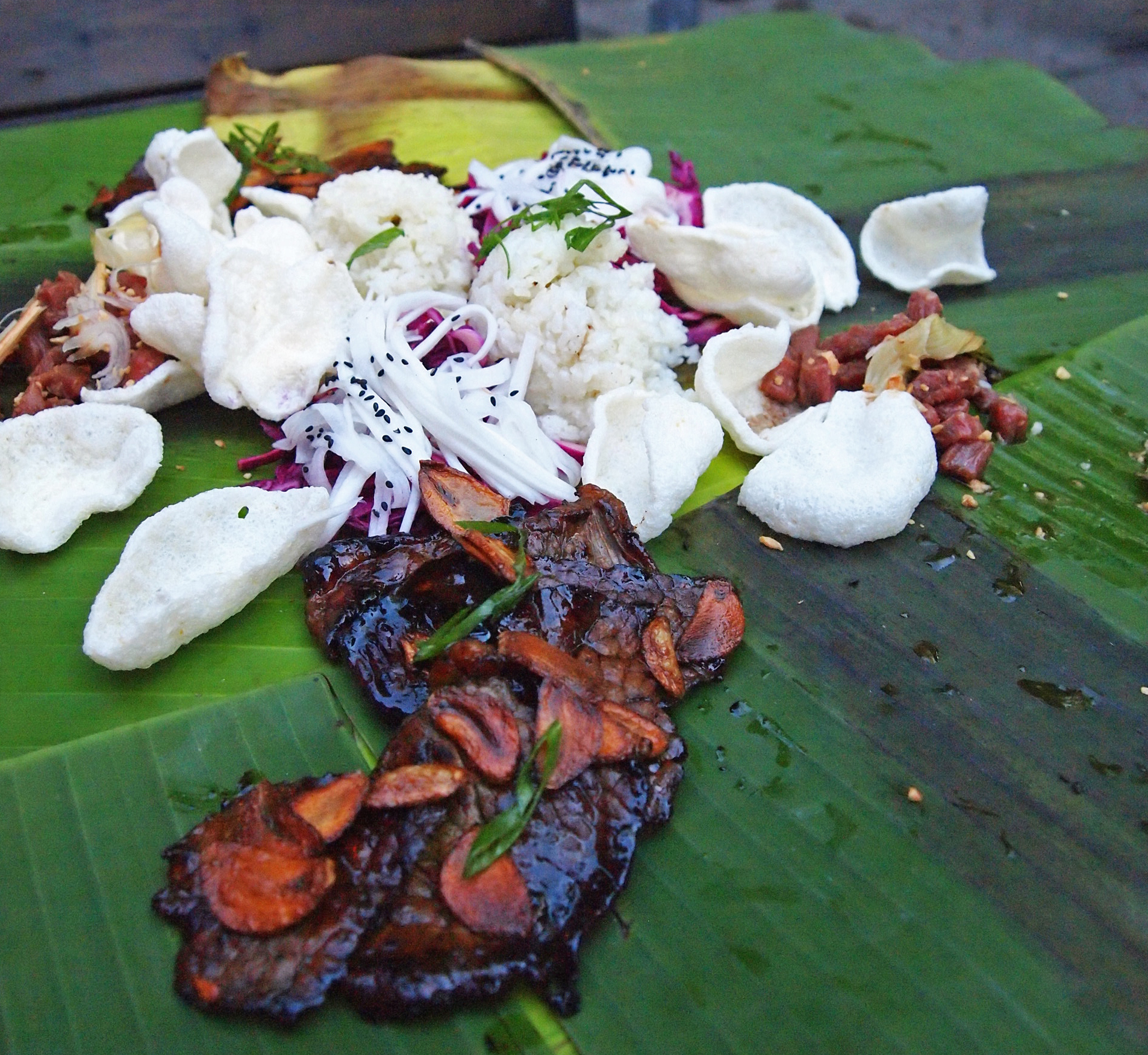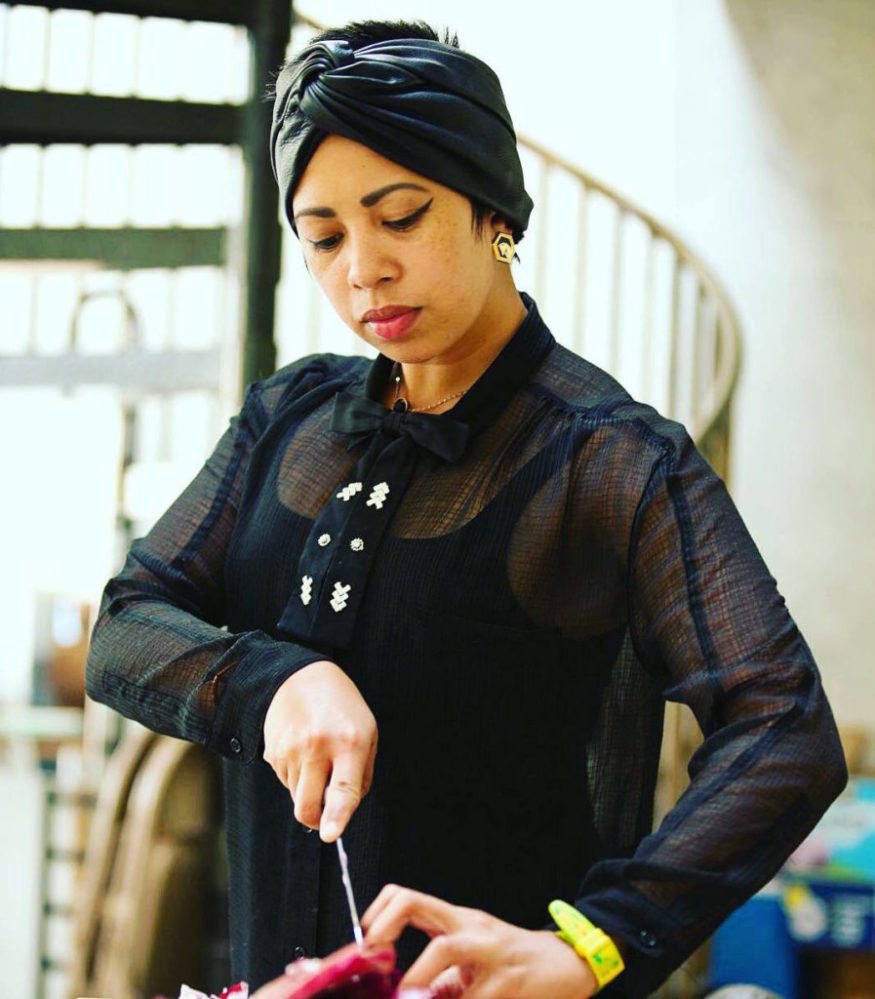The last time Filipina chef Yana Gilbuena (photo above) was in town, I leapt at the chance to experience her take on Pinoy cuisine. Now that she’s dropping by Houston one more time before taking her pop-up dinner series to South America, I again could not stay away. Like Gilbuena, I love the Filipino food I grew up with but can’t always get the stuff I remember.
There are plenty of great places to eat Filipino in this city. But Gilbuena brings a unique artistry to the traditional dishes. She’s carrying Filipino cuisine into new spaces and showcasing not just what Pinoy eats are about but what they can be about.
Gilbuena has been hosting snout-to-tail pop-ups – a series called HAYOP – every Tuesday at Boheme for a brief test kitchen residency that will end May 31. I made it to the one last week, postponed to Friday because of the floods. There was a late start due to the unexpected circumstances, but my companion and I were happy to loll on the patio in the perfect weather with our drinks.

Photo by Yana Gilbuena
At our booth, wide banana leaves blanketed the table, portending the feast to come. We would eat kamayan style, with the hands, and each got our own towel, to be stained red, orange and purple over the evening, as though from the slaughter of a dream beast. That beast: the baka. Cow night.
Gilbuena, wearing bright banana earrings, talked us through the layers of each course while plating the food in a kind of radiating mandala on the leaves. She prefaced with warm coconut pandan sinangag, or garlic fried rice, which proved a good spacing food between intense flavors, as well as ribbons of intensely pickled red cabbage and daikon radish that she suggested we eat between courses to reset our palates.
First up was bistek heart tartare, marinated in soy and Philippine citrus with leeks, shallots and roasted garlic bits on top and shrimp chips alongside. The sweet bite of the citrus, the deep and tender heart, and the saltiness of the shrimp together woke us up and kept us at attention.

Photo by Sarah Bronson
Next was beef tapa, here thin medallions of flank steak steeped in the flavors often found on Philippine barbecue skewers – sweetness, soy sauce, char, all seeping into the wrinkles of the steak. On top were roasted garlic slices; my companion and I ended up swiping crunchy pieces from each other.
Then came the course I was least prepared for as a nose-to-tail novice: book tripe (a less common kind of tripe, from the third stomach of the cow), beneath wood ear mushrooms, shiitake, tomato stew and a little hairdo of shaved roasted carrot. I learned that tripe looks like an undersea creature and trembles like gelatin but gives less flavor than body to the rest. The dish mixed unexpected textures and pulled off some totally opposite flavors. The stew gave a pleasant heat and richness counterpointed by the caramelized carrots, while the mushrooms negotiated the two.
If we had to choose a winner, it would be the oxtail kare kare, a classic Filipino dish with a peanut butter sauce, here with eggplant and bok choy. We pulled the meat off the bones so easily, and the savory peanut butter melded everything into an ecstatic continuum.
Last was kulma, or coconut curry, made with lengua, or tongue, chopped too small to intimidate. The tongue varied between chewy and more tender, but the curry was magnificent, combining spices like toasted cumin, coriander and bursting white pepper with tomato sauce and coconut milk.
With the attentive Gilbuena steering us along, we ultimately conquered the cow. And to our amusement, the kaleidoscopic accumulating heap we were going in on evidently made our fellow bar patrons jealous, as people kept coming up to us to ask where they could get some of their own. We told them to look for HAYOP on Feastly or simply come to Boheme on Tuesday. We left champions.







Follow Us